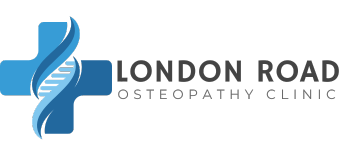ABOUT OSTEOPATHY
Osteopathy is a branch of medicine that focuses on the diagnosis, treatment, and prevention of musculoskeletal disorders. It was founded in the late 19th century by Andrew Taylor Still, a physician from Missouri who believed in the body’s innate ability to heal itself. Today, osteopathy is a regulated profession in many countries around the world, including the United Kingdom, where it is overseen by the General Osteopathic Council. In this page, we will explore the history of Osteopathy and the role of the General Osteopathic Council in the UK.
The History of Osteopathy
Andrew Taylor Still founded osteopathy in 1874 after the death of his children and wife due to illness. He believed that conventional medicine did not provide the answers he was looking for, and he set out to develop a new approach to medicine that would focus on the body’s natural healing abilities. Still believed that disease and illness were caused by a disruption in the body’s musculoskeletal system, which could be corrected through manual manipulation.
In the early years, osteopathy was not widely accepted, and Still faced opposition from the medical community. However, he persisted and continued to develop his approach to medicine, eventually opening the American School of Osteopathy in Missouri in 1892. The school was the first of its kind and trained many of the early pioneers of osteopathy.
Over the years, osteopathy has evolved, and today it is recognised as a legitimate form of medical treatment in many countries around the world. Osteopaths are licensed medical professionals who undergo rigorous training in anatomy, physiology, and manual manipulation techniques.
The General Osteopathic Council in the UK
The General Osteopathic Council (GOsC) was established in 1993 under the Osteopaths Act, which regulates the practice of osteopathy in the United Kingdom. The GOsC is responsible for ensuring that all osteopaths in the UK are properly trained, qualified, and meet the standards of professional conduct set by the council.
The GOsC maintains a register of all qualified osteopaths in the UK and investigates complaints made against osteopaths who are registered with the council. The council also sets standards for osteopathic education and training and approves osteopathic courses and qualifications.
The GOsC is committed to protecting the public by ensuring that all osteopaths in the UK provide safe, effective, and ethical treatment. It works closely with other healthcare regulatory bodies to promote the highest standards of care and safety in the practice of osteopathy.
So in summary, osteopathy has a rich history, dating back to the late 19th century when Andrew Taylor Still founded the field. Today, osteopathy is a regulated profession in many countries around the world, including the UK, where it is overseen by the General Osteopathic Council. The GOsC plays a critical role in ensuring that all osteopaths in the UK meet the highest standards of training, qualification, and professional conduct, and it is committed to protecting the public by promoting safe, effective, and ethical treatment. If you are interested in learning more about osteopathy and how it can benefit you give us a ring or book in using the link below.


